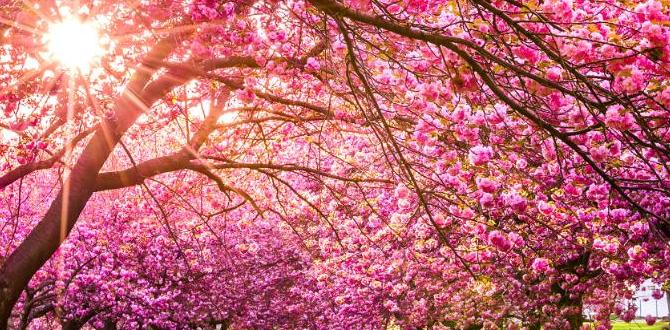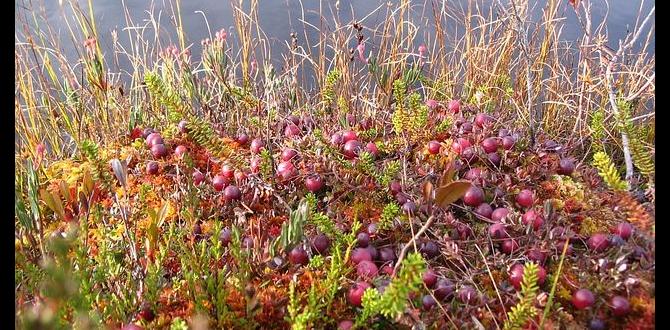Plan your Arusha winter trip smoothly with this guide. Discover the best times to visit, what to pack for comfortable exploration, essential visa and health requirements, and top activities for an unforgettable Tanzanian adventure.
Thinking about an Arusha winter trip? You’re in for a treat! Arusha, Tanzania, a vibrant gateway to some of Africa’s most incredible wildlife destinations, offers a unique experience, especially during its “winter” months. But what exactly does “winter” mean in a tropical climate, and how do you prepare? Many travelers find themselves wondering about the best time to visit, what clothes to pack for potentially cooler evenings, and how to handle the practicalities like visas and health precautions. Don’t stress—planning your adventure is easier than you think! This guide will walk you through everything you need for a comfortable and unforgettable journey.
Understanding Arusha’s “Winter”
When we talk about winter in Arusha, we’re not talking about snow or freezing temperatures like in many parts of the world. Arusha is located near the equator, so its climate is tropical, characterized by distinct wet and dry seasons rather than four traditional seasons. Arusha’s “winter” generally aligns with its cooler, drier period, which typically runs from June to October. During these months, daytime temperatures are pleasant, often ranging from 20°C to 25°C (68°F to 77°F), making it ideal for exploring.
The evenings and early mornings can get a bit cooler, especially at higher altitudes. This mild “winter” presents a fantastic opportunity for travel, as it’s part of the dry season, meaning less rain and clearer skies, which are perfect for wildlife viewing and scenic adventures. You’ll want to pack layers to adapt to these temperature changes.
Best Time to Visit Arusha During Its “Winter” (June – October)
The period from June to October is often considered the prime time to visit Arusha and its surrounding attractions for several compelling reasons:
- Dry Season Advantage: This is the core of the dry season. Rainfall is minimal, leading to sunny days and making road conditions for safaris much better. The landscape is greener after the preceding rains, but not so dry that wildlife is scarce.
- Optimal Wildlife Viewing: With fewer water sources available, animals tend to congregate around remaining waterholes, making them easier to spot. This is particularly true for the Great Migration, which often passes through the Serengeti ecosystem during these months.
- Pleasant Weather: Daytime temperatures are comfortable, typically in the low to mid-20s Celsius (low to mid-70s Fahrenheit). This is perfect for game drives, hiking, and exploring without the intense heat of the peak summer months.
- Cooler Evenings and Mornings: While days are pleasant, early mornings and evenings can be cool, sometimes dropping to single digits Celsius (40s Fahrenheit) at higher elevations like near Mount Kilimanjaro. This makes packing layers essential.
- Less Humid: The dry air makes the climate feel more comfortable and less sticky than during the wetter, more humid months.
While this period is popular, it’s important to note that “crowded” in Arusha is relative. You’ll encounter other tourists, but the vastness of the national parks ensures you still have plenty of space and a sense of adventure. Booking accommodations and safari tours in advance is still a good idea.
Essential Documents and Visas
Proper documentation is key to a stress-free trip. Before you even start packing, ensure you have these essentials sorted:
- Passport: Your passport must be valid for at least six months beyond your intended stay, with at least two blank pages for entry and exit stamps.
- Visas: Most nationalities require a visa for Tanzania. You can apply for a tourist visa online through the official Tanzanian Immigration website or obtain one upon arrival at Kilimanjaro International Airport (JRO). It’s generally recommended to apply online in advance to save time. For the most current visa requirements and fees, always check the official Tanzanian immigration portal or consult your local Tanzanian embassy or consulate.
- Yellow Fever Vaccination Certificate: Depending on your departure country and itinerary, a Yellow Fever vaccination certificate might be required. Check the latest regulations from the Tanzanian Ministry of Health or the CDC.
- Travel Insurance: This is non-negotiable. Ensure your policy covers medical emergencies, trip cancellations, lost luggage, and any adventure activities you plan to undertake.
- Flight Tickets and Accommodation Bookings: Keep digital and printed copies of all your reservations.
Health and Safety Precautions
Your well-being is paramount. Taking the right health precautions will ensure you can enjoy your trip to the fullest.
Vaccinations and Malaria Prevention
Consult your doctor or a travel clinic at least 4-6 weeks before your trip. They can advise on recommended vaccinations beyond Yellow Fever, which might include Hepatitis A, Typhoid, and Tetanus. Malaria is present in Tanzania, including the Arusha region. Your doctor can prescribe antimalarial medication. It’s also crucial to protect yourself from mosquito bites:
- Use insect repellent containing DEET or picaridin, especially during dawn and dusk.
- Wear long sleeves and trousers, particularly in the evenings.
- Sleep under a mosquito net if your accommodation does not have screens.
Food and Water Safety
To avoid traveler’s diarrhea, follow these guidelines:
- Drink only bottled or purified water. Avoid tap water, ice cubes made from tap water, and brushing your teeth with tap water unless you’re certain it’s safe.
- Eat well-cooked food, served hot.
- Be cautious with raw fruits and vegetables; ensure they are peeled or washed thoroughly with purified water.
- Street food can be tempting, but opt for reputable vendors with good hygiene practices.
Traveler’s Diarrhea and Personal Care Items
Even with precautions, stomach upset can happen. Carrying a basic medical kit is wise. For adults and children who may experience digestive issues or require extra support, having easily accessible personal care items is essential. This might include absorbent products like adult diapers or child diapers, which offer peace of mind and comfort, especially during long travel days or if you have specific medical needs. Brands specializing in discreet, comfortable, and highly absorbent options can be a lifesaver, ensuring you can focus on your adventure without worry. Always store these items in a cool, dry place and ensure you have enough for your entire trip, as purchasing them locally might be difficult or not align with your usual preferences.
Altitude Sickness
Arusha is situated at a relatively high altitude (approximately 1,400 meters or 4,600 feet). While not as high as some mountain destinations, it’s still a good idea to:
- Stay hydrated by drinking plenty of water.
- Avoid excessive alcohol consumption in the first few days.
- Take it easy on your arrival day, allowing your body to acclimatize.
- If you plan to ascend to much higher altitudes, like climbing Kilimanjaro, consult your doctor about preventative medications.
What to Pack for Your Arusha Winter Trip
Packing for Arusha’s cooler, dry season requires a mix of adaptability and comfort. Layers are your best friend!
Clothing
Focus on breathable, versatile fabrics. Neutral colors are best for safaris as they blend with the environment and don’t attract insects as much as bright colors.
- Base Layers: Lightweight, moisture-wicking tops and bottoms.
- Mid-Layers: Fleece jackets or sweaters for warmth during cooler parts of the day or evening.
- Outer Layer: A waterproof and windproof jacket. Even in the dry season, you might encounter a brief shower or cool winds.
- Trousers/Pants: Comfortable, durable trousers. Hiking pants or cargo pants are great. Consider one pair of lighter weight pants for warmer days.
- Shorts: Optional, for warmer midday temperatures or relaxing.
- T-shirts and Long-Sleeved Shirts: A mix of both for layering and sun protection. Long sleeves are great for evenings and sun protection.
- Socks: Plenty of comfortable socks, including some thicker ones for cooler mornings.
- Underwear: Pack enough for your trip.
Footwear
- Comfortable Walking Shoes: Essential for around lodges, exploring towns, or light hikes.
- Closed-toe Shoes/Boots: If you plan on more strenuous hikes or want sturdy footwear for safaris. Waterproof options are a bonus.
- Sandals/Flip-flops: For relaxing at your lodge or hotel.
Accessories
- Sun Hat: A wide-brimmed hat is crucial for sun protection.
- Sunglasses: Protect your eyes from the bright sun.
- Scarf or Bandana: Useful for dust protection on dusty roads or as a fashion accessory.
- Reusable Water Bottle: Stay hydrated and reduce plastic waste.
- Camera and Extra Batteries/Memory Cards: You’ll want to capture every moment!
- Binoculars: Enhance your wildlife viewing experience.
- Power Bank/Portable Charger: Keep your devices charged on the go.
- Adapter: Tanzania uses Type D and Type G electrical outlets. A universal adapter is a good investment. You can find more information on plugs and voltages on international-electrical-symbols.com, which lists specific socket types used in Tanzania.
- Small Backpack/Daypack: For carrying essentials during day trips and safaris.
- Personal Care Items: Including prescription medications, basic first-aid, toiletries, hand sanitizer, and any specialized items like incontinence products (adult or child diapers) for comfort and peace of mind.
Sample Packing List Table
Here’s a handy table to help visualize your packing:
| Category | Essential Items | Notes |
|---|---|---|
| Clothing | Lightweight shirts, long-sleeved shirts, fleece jacket, waterproof jacket, trousers, shorts, socks | Focus on layers and neutral colors. |
| Footwear | Comfortable walking shoes, closed-toe shoes/boots, sandals | Break in new shoes before your trip. |
| Accessories | Sun hat, sunglasses, scarf, reusable water bottle, power bank, adapter | Don’t forget personal care items. |
| Documents & Money | Passport, visa, flight tickets, insurance, credit/debit cards, some USD cash | Keep copies separate from originals. |
| Health & Safety | First-aid kit, insect repellent, sunscreen, personal medications, hand sanitizer | Consult doctor for travel vaccinations and malaria prophylaxis. |
Top Activities and Destinations Near Arusha
Arusha is the perfect base for exploring some of Tanzania’s most iconic natural wonders.
1. Safari in Serengeti National Park
No trip to Arusha is complete without experiencing a safari in the legendary Serengeti. Famous for the Great Migration of wildebeest and zebras, it’s a wildlife spectacle unlike any other. The park boasts incredible populations of lions, leopards, elephants, buffaloes, and rhinos, making it a prime destination for witnessing the African “Big Five.”
2. Mt. Kilimanjaro Climb or Day Trip
The roof of Africa beckons! While a full climb takes 5-7 days, you can arrange day trips to explore the lower slopes and lush rainforest, often part of routes like Machame or Marangu. Even if you’re not climbing, the majestic views of Kilimanjaro from afar are breathtaking.
3. Ngorongoro Conservation Area
A UNESCO World Heritage Site, the Ngorongoro Crater (or caldera) is a natural amphitheater teeming with wildlife. This dense animal population, including the endangered black rhino, wildebeest, lions, and flamingos, offers unparalleled game viewing. It’s often described as a “Seventh Wonder of the World.”
4. Tarangire National Park
Known for its large elephant herds and iconic baobab trees, Tarangire is a fantastic destination, especially during the dry season (June-October) when animals gather around the Tarangire River. It offers a slightly different landscape and wildlife experience compared to Serengeti or Ngorongoro.
5. Lake Manyara National Park
This park is renowned for its diverse ecosystems, from the rift valley escarpment to groundwater forest and alkaline lake. It’s famous for its tree-climbing lions, large troops of baboons, and abundant birdlife. The views over Lake Manyara are stunning.
6. Cultural Tours and Local Markets
Arusha itself offers opportunities to immerse yourself in local culture. Visit the bustling Arusha Central Market for local crafts, coffee, and fresh produce. You can also arrange visits to Maasai villages to learn about their traditions and way of life.
Transportation in and Around Arusha
Getting around Arusha and to your safari destinations is usually arranged through tour operators, which is highly recommended for safaris. For local travel within Arusha:
- Taxis: Readily available for getting around town. Agree on the fare before starting your journey.
- Dala-dalas: These are local minibusses and are a very cheap way to get around for the adventurous, but they can be crowded and follow set routes.
- Safari Vehicles: Your primary mode of transport for national parks. These are typically 4×4 Land Cruisers or Land Rovers driven by experienced guides.
For international flights, Kilimanjaro International Airport (JRO) is the main gateway, located about an hour’s drive from Arusha. Many reputable tour operators can arrange airport transfers for you.
Budgeting for Your Arusha Trip
Tanzania can be an expensive destination, especially for safaris, but there are ways to manage your budget. Key costs include:
- Park Fees: These are set by the Tanzanian government and can be substantial (e.g., Serengeti $70-80 USD per person per day).
- Accommodation: Ranges from budget guesthouses to luxury lodges and tented camps.
- Safari Tours: Often inclusive of vehicle, guide, park fees, and accommodation. Group tours are generally more affordable than private tours.
- Flights: International and domestic flights.
- Visas and Vaccinations: Essential pre-trip costs.
- Tips: For guides, cooks, and lodge staff.
Tip: Consider traveling during the shoulder season (just before or after the peak “winter” months) for potentially lower prices, though the weather might be slightly less predictable. Researching package deals can also offer significant savings.
Frequently Asked Questions About Arusha Winter Trips
What is the weather like in Arusha during its “winter”?
Arusha’s “winter” (June-October) is its dry season. Days are typically sunny and warm, with temperatures averaging 20-25°C (68-77°F). Evenings and early mornings are cooler, sometimes dropping to 10-15°C (50-59°F), especially at higher altitudes.
Is it too cold to visit Arusha in its “winter”?
No, it’s generally not too cold. The temperatures are comfortable for most activities. The key is to pack layers, including a warm fleece or jacket, for the cooler mornings and evenings. It’s a pleasant time to visit for safaris and sightseeing.
What are the best safari parks to visit from Arusha during this time?
The dry season is excellent for Serengeti National Park (especially for the Great Migration), Ngorongoro Crater, Tarangire National Park, and Lake Manyara National Park. Wildlife is more concentrated around water sources.
What essential items should I pack for a safari in Arusha’s “winter”?
Pack light, neutral-colored clothing for layering, including a waterproof jacket, warm sweaters or fleece, comfortable walking shoes, a hat, sunglasses, insect repellent, sunscreen, and binoculars. Don’t forget personal medications and a basic first-aid kit.
Do I need malaria medication for Arusha?
Yes, malaria is present in Tanzania. It’s advised to consult your doctor about antimalarial medication and to take precautions against mosquito bites, such as using repellent and wearing long sleeves/trousers in the evenings.
What is the best way to get around Arusha and to national parks?
For safaris, organized tours using 4×4 vehicles with experienced guides are the standard and recommended method. Within Arusha town, taxis are available. For local transport,





